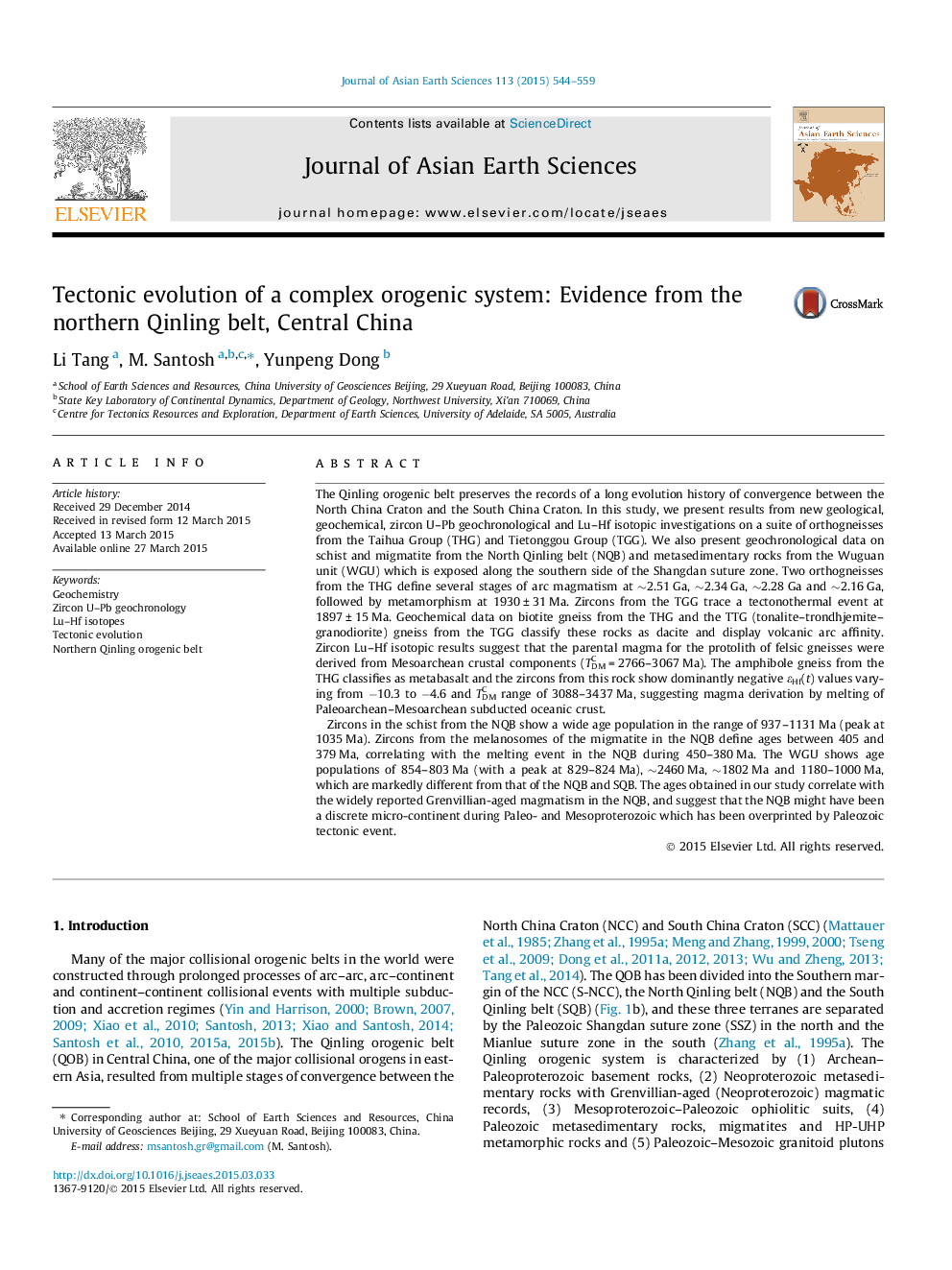| کد مقاله | کد نشریه | سال انتشار | مقاله انگلیسی | نسخه تمام متن |
|---|---|---|---|---|
| 4730317 | 1356749 | 2015 | 16 صفحه PDF | دانلود رایگان |
• Early Neoproterozoic magmatic records from North Qinling Belt.
• Widespread migmatization during 500–380 Ma.
• NQB proposed to have been a micro-continent during Meso- and early Neoproterozoic.
The Qinling orogenic belt preserves the records of a long evolution history of convergence between the North China Craton and the South China Craton. In this study, we present results from new geological, geochemical, zircon U–Pb geochronological and Lu–Hf isotopic investigations on a suite of orthogneisses from the Taihua Group (THG) and Tietonggou Group (TGG). We also present geochronological data on schist and migmatite from the North Qinling belt (NQB) and metasedimentary rocks from the Wuguan unit (WGU) which is exposed along the southern side of the Shangdan suture zone. Two orthogneisses from the THG define several stages of arc magmatism at ∼2.51 Ga, ∼2.34 Ga, ∼2.28 Ga and ∼2.16 Ga, followed by metamorphism at 1930 ± 31 Ma. Zircons from the TGG trace a tectonothermal event at 1897 ± 15 Ma. Geochemical data on biotite gneiss from the THG and the TTG (tonalite–trondhjemite–granodiorite) gneiss from the TGG classify these rocks as dacite and display volcanic arc affinity. Zircon Lu–Hf isotopic results suggest that the parental magma for the protolith of felsic gneisses were derived from Mesoarchean crustal components (TDMC = 2766–3067 Ma). The amphibole gneiss from the THG classifies as metabasalt and the zircons from this rock show dominantly negative εHf(t) values varying from −10.3 to −4.6 and TDMC range of 3088–3437 Ma, suggesting magma derivation by melting of Paleoarchean–Mesoarchean subducted oceanic crust.Zircons in the schist from the NQB show a wide age population in the range of 937–1131 Ma (peak at 1035 Ma). Zircons from the melanosomes of the migmatite in the NQB define ages between 405 and 379 Ma, correlating with the melting event in the NQB during 450–380 Ma. The WGU shows age populations of 854–803 Ma (with a peak at 829–824 Ma), ∼2460 Ma, ∼1802 Ma and 1180–1000 Ma, which are markedly different from that of the NQB and SQB. The ages obtained in our study correlate with the widely reported Grenvillian-aged magmatism in the NQB, and suggest that the NQB might have been a discrete micro-continent during Paleo- and Mesoproterozoic which has been overprinted by Paleozoic tectonic event.
Figure optionsDownload as PowerPoint slide
Journal: Journal of Asian Earth Sciences - Volume 113, Part 2, 1 December 2015, Pages 544–559
